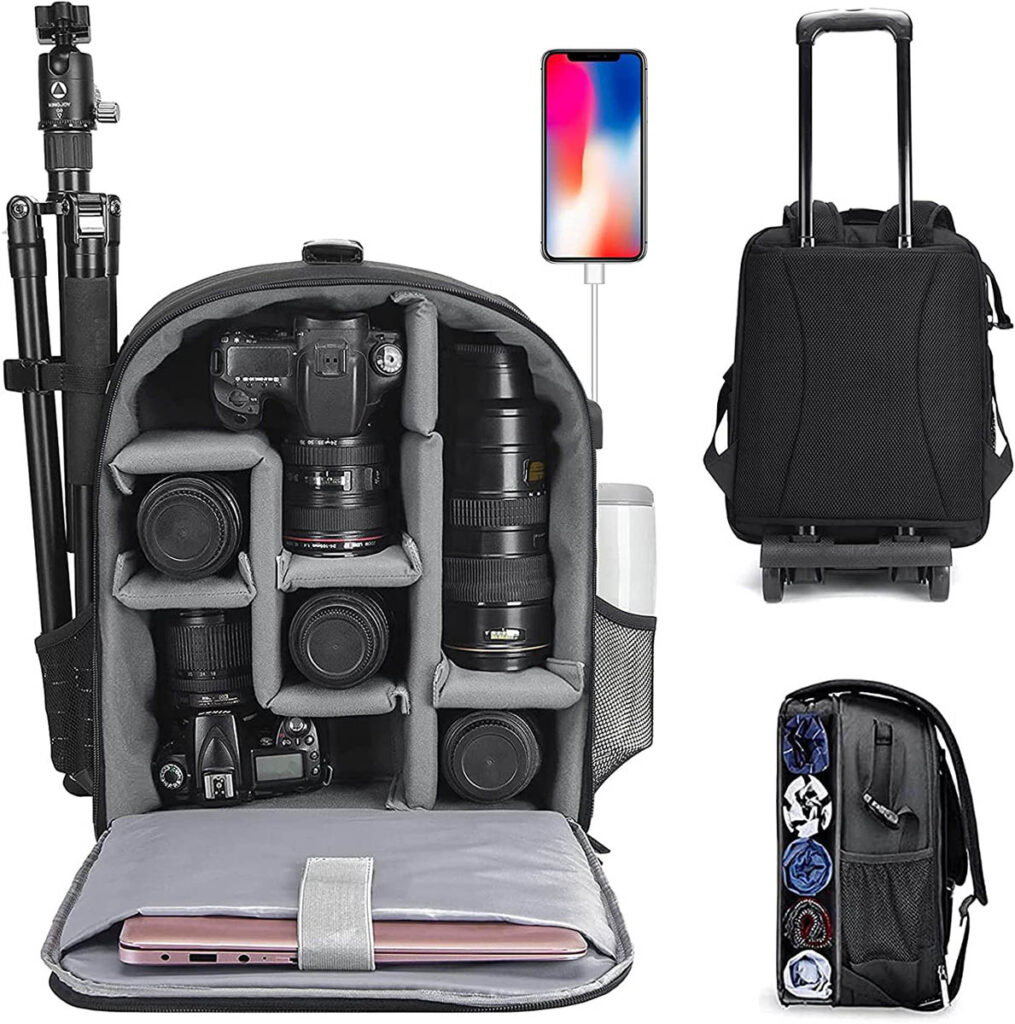The Ultimate Guide to Choosing the Right Camera Bag
Camera bags are essential protection equipment for any photographer’s camera, whether you’re a beginner or a professional. They not only protect your gear but also help you stay organized and comfortable while shooting. Let’s explore why a good camera bag matters and how to choose the best one for your specific needs.

Why Do You Need a Camera Bag?
1. Protection
Camera equipment is delicate and expensive. A good camera bag features padded compartments that cushion your gear against bumps and drops. For example, if you’re hiking in the mountains and accidentally slip, a padded bag can help prevent damage to your camera and lenses. Look for bags made from durable materials, like nylon or polyester, with ample padding to shield your equipment from shock.
2. Organization
With multiple lenses, batteries, and other accessories, keeping everything organized is vital. A well-designed camera bag has different compartments and pockets. For instance, if you have a DSLR, you might have a dedicated space for your camera body, separate sections for each lens, and pockets for filters and memory cards. This organization allows you to find what you need quickly, especially during a busy shoot.
3. Comfort
Photography often involves long hours of carrying gear, which can be taxing on your body. A good camera bag is designed with ergonomics in mind. Backpacks with padded straps and breathable mesh back panels help distribute weight evenly. For example, a photographer on a day-long shoot will appreciate a bag that doesn’t dig into their shoulders or back, allowing them to focus on their craft rather than discomfort.
Types of Camera Bags
1. Backpacks

Backpacks are excellent for photographers who carry a lot of gear. They provide ample storage space and keep the weight balanced across your back. For example, a bag like the Lowepro ProTactic 450 AW can hold multiple camera bodies, several lenses, and even a laptop, making it ideal for both outdoor shoots and travel.
2. Shoulder Bags

Shoulder bags are perfect for quick access and everyday use. They often have a stylish look, making them suitable for urban environments. For example, the Peak Design Everyday Messenger Bag offers easy access to your camera while still looking sleek, making it a favorite among street photographers.
3. Holster Bags
If you prefer to travel light, a holster bag might be for you. These compact bags allow you to carry one camera and a lens, giving you quick access to your gear. The Think Tank Photo Hubba Hubba Hiney is a great example, allowing you to keep your setup streamlined and ready for action.
4. Rolling Bags

Traveling photographers often benefit from rolling bags. They have wheels and a handle, making it easy to transport heavy gear through airports or on uneven surfaces. The Manfrotto Rolling Backpack, for example, can be rolled or worn as a backpack, giving you flexibility based on your travel situation.
Key Features of Camera Bag
1. Size
The size of your camera bag is crucial. You want enough space for your equipment without it being too bulky. For example, if you have a mirrorless camera and a couple of lenses, a medium-sized bag like the Tenba Solstice 12L may fit perfectly without being overwhelming.
2. Padding
Look for bags with high-quality padding to protect your gear from damage. A good example is the Tamrac Anvil Slim 11, which features thick, padded dividers that can be adjusted to fit your specific setup.
3. Water Resistance
Weather can be unpredictable. A water-resistant bag can keep your gear dry during sudden rain. For instance, the ONA Bowery bag is made from water-resistant waxed canvas, ensuring your camera remains safe even in wet conditions.
4. Adjustable Dividers
Customizable compartments allow you to tailor the bag’s layout to fit your gear. Bags like the Lowepro Slingshot Edge 250 AW come with adjustable dividers, letting you create the perfect setup for your specific gear, whether you’re carrying a DSLR or a compact mirrorless camera.
5. Comfortable Straps
Look for padded, adjustable straps to enhance comfort during long shoots. The Peak Design Slide camera strap, for instance, is known for its comfort and versatility, allowing you to wear it as a sling, neck, or shoulder strap.
Tips for Using Your Camera Bag
Keep it Clean
Regularly clean your bag to prevent dirt and dust from damaging your gear. A simple microfiber cloth can help keep the exterior clean, while you can use a soft brush to remove debris from the interior.
Don’t Overpack
Only take the gear you need to avoid overloading your bag. This makes it easier to move around and ensures that everything is organized. For example, if you’re heading out for a casual day of shooting, consider taking just one camera body and a versatile lens instead of a full kit.
Know Your Bag
Familiarize yourself with your bag’s compartments and organization system. Knowing where everything is will save you time and hassle when you need to grab something quickly.
Conclusion
Choosing the right camera bag is essential for any photographer. A good bag protects your gear, helps you stay organized, and ensures you’re comfortable while shooting. By considering the types of bags available, key features to look for, and practical tips for usage, you can find a camera bag that perfectly fits your lifestyle and photography needs. With the right camera bag, you’ll be ready to capture beautiful moments without worry. Happy shooting!



worthy